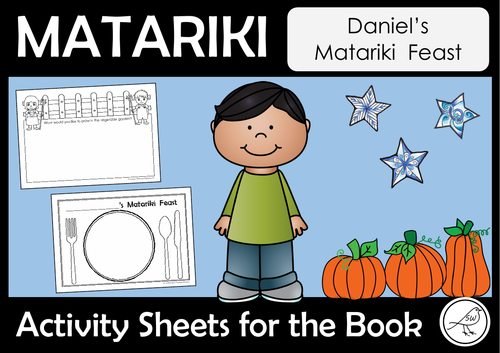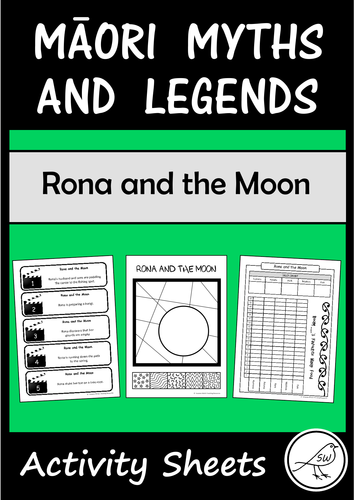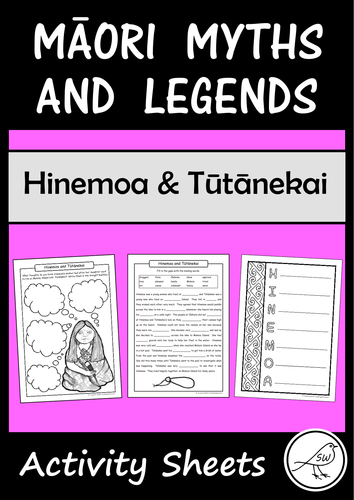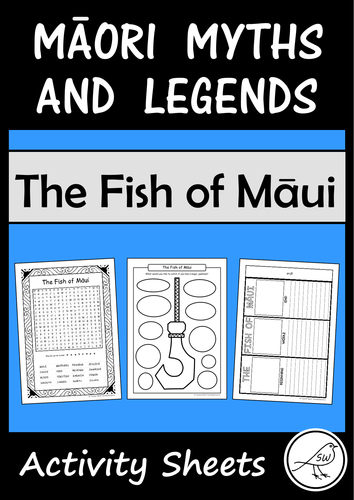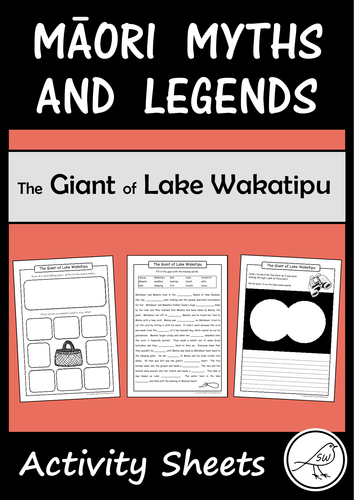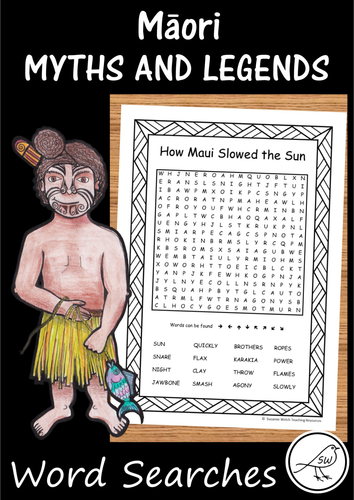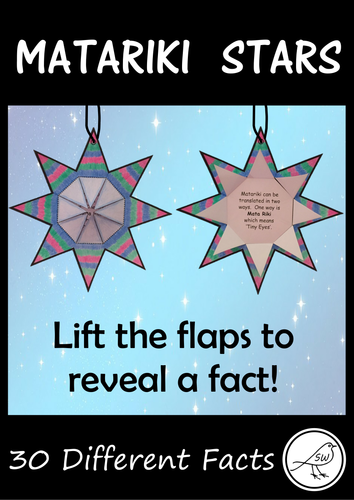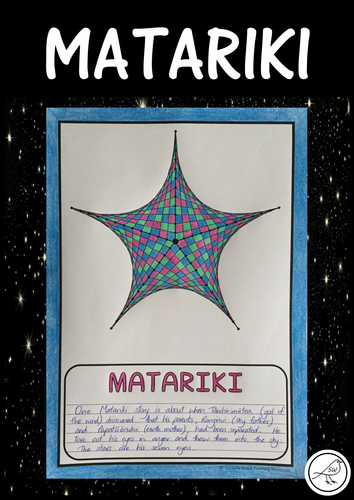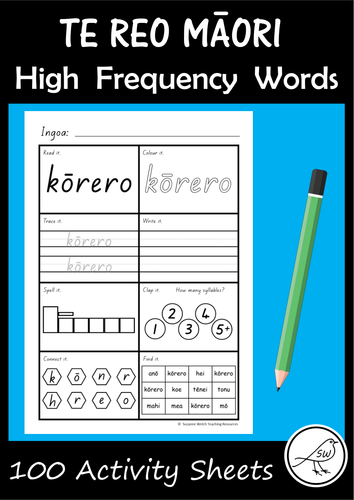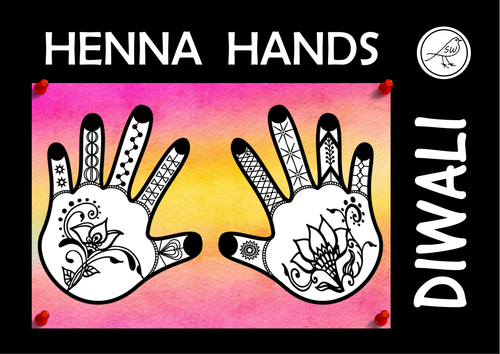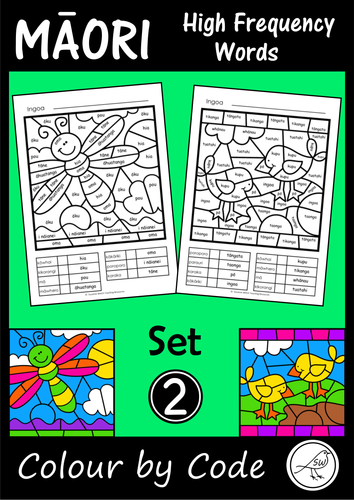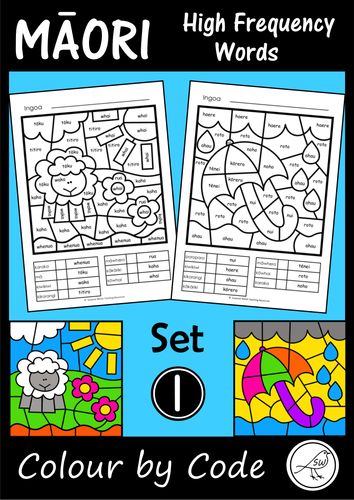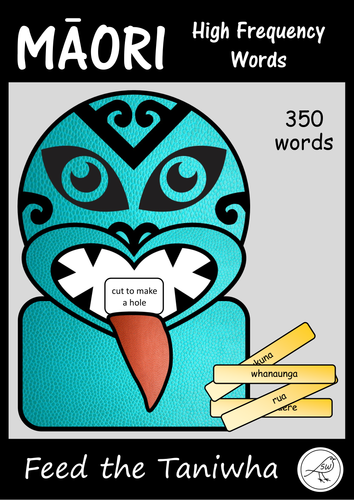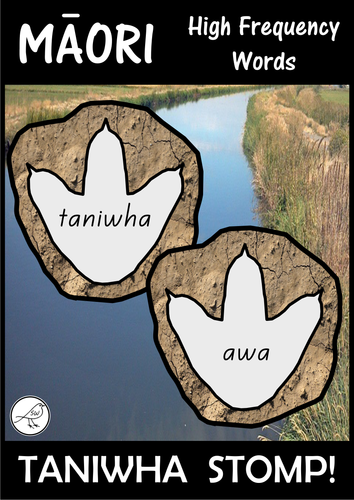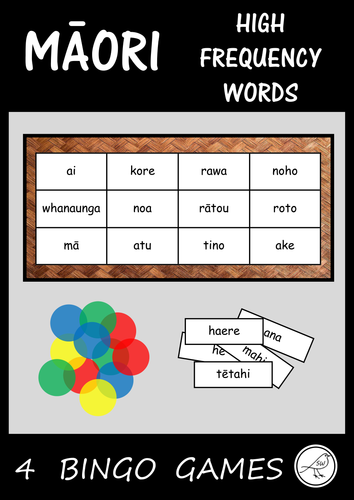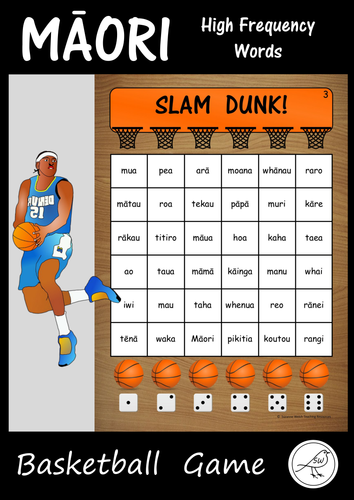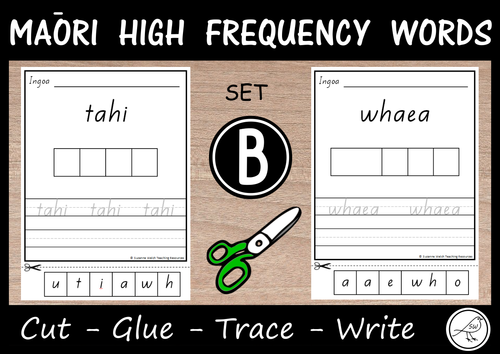
377Uploads
162k+Views
10k+Downloads
Languages

Matariki – Daniel’s Matariki Feast – Activity sheets for the book
A set of six activity sheets for using with junior students after reading the following book:
TITLE: Daniel’s Matariki Feast
AUTHOR: Rebecca Beyer and Linley Wellington
ILLUSTRATOR: Christine Ross
Included:
♦ Draw what you’d like to have for a Matariki feast.
♦ Draw what you’d like to grow in the vegetable garden.
♦ Colour, trace and write the word ‘Matariki’. Fill in the letter boxes and connect the letters with a line. Draw a picture that shows how you’d like to celebrate Matariki.
♦ Printing practice – trace the words: ‘Matariki is a good time to start something new. I would like to …’ then draw a picture to show your answer.
♦ Design a new cover for the book.
♦ Word graph. Circle and count the words, record on the block graph and write the number underneath.
**********************************************************************
© Suzanne Welch Teaching Resources

Māori Myths and Legends – How Māui Slowed the Sun
These are fun and engaging activity sheets for the story ‘How Māui Slowed the Sun’. Plenty of activities to pick-and-choose from. Simply print and you’re ready to go! A great addition to a unit study on Māori Myths and Legends.
Most of the activity sheets can be used with any retelling of this story. There are a few activities that were made using the story written by Peter Gossage. These activities are marked with an asterisk (*).
Activities:
♦ Cloze – fill in the missing words *
♦ Word search *
♦ Order events in the story *
♦ Similes – write and draw 4 similes *
♦ Drama – Freeze frame cards *
♦ Music – Sound effect cards *
♦ Storyboard – with words *
♦ Storyboard – without words
♦ Write a poem (noun, adjectives, verbs, thought, synonym)
♦ Acrostic poem
♦ Jawbone – decorate and write
♦ List – write a list of possible jobs people had to do during the short days
♦ 5 senses – what a character may see, hear, smell, etc
♦ Thought bubbles - what a character may be thinking
♦ Story outline – problem, response, action, outcome
♦ Trifold – beginning, middle, end (paper foldable)
♦ Art – draw a face on the sun
♦ Newspaper article – write and draw
♦ Graph – tally chart and block graph
♦ Bookmark
♦ Character traits
♦ Wall ball – write and draw
♦ Diorama – write and draw (paper foldable)
♦ Art – decorate the sun in the same style as the illustrator
♦ Pattern art
♦ Book cover – design a new one
♦ Book dust jacket
♦ Story review
♦ Flap booklet - write and/or draw. With and without headings.
♦ Holiday suitcases – needs and wants
♦ Postage stamp design
♦ Award design
♦ T-shirt design
♦ Flip-flap booklet – 4 flaps (paper foldable)
♦ Postcard
♦ Comic strip
♦ Reporter questions
♦ Email writing
♦ Letter writing
♦ Selfie photo drawing
♦ Text writing
♦ Gift giving – think and write
♦ Is / Can / Has - brainstorm
♦ Binoculars – draw and write
♦ I-pad – draw picture
♦ Party plan
♦ Bedroom plan
♦ 30 second talks – oral language activity
♦ Bingo board templates
♦ Graphic organiser – staying safe in the sun
♦ Poster design – how to be sun smart
♦ Reading challenge
Answer sheets are provided for the word search, cloze, and ordering events activities.
Designed on A4 size paper.
The word search is also included in my Maori Myths and Legends Word Search resource.
© Suzanne Welch Teaching Resources

Māori Myths and Legends – Rona and the Moon
These are fun and engaging activity sheets for the story ‘Rona and the Moon’. Plenty of activities to pick-and-choose from. Simply print and you’re ready to go! A great addition to a unit study on Māori Myths and Legends.
Most of the activity sheets can be used with any retelling of this story. There are a few activities that were made using the story written by Peter Gossage. These activities are marked with an asterisk (*).
Activities:
♦ Cloze – fill in the missing words *
♦ Word search *
♦ Order events in the story *
♦ Order steps and draw pictures to make Rona’s hangi *
♦ Graphic organiser – research facts about fishing with a hīnaki *
♦ 30 second talks – oral language activity *
♦ Drama – Freeze frame cards *
♦ Music – Sound effect cards *
♦ Storyboard – with words *
♦ Storyboard – without words
♦ Write a poem (noun, verbs, adjectives, synonym)
♦ Acrostic poem
♦ 5 senses – what a character may see, hear, smell, etc
♦ Thought bubbles - what a character may be thinking
♦ Story outline – problem, response, action, outcome
♦ Trifold – beginning, middle, end (paper foldable)
♦ Art – draw Rona and the tree on the moon
♦ Newspaper article – write and draw
♦ Graph – tally chart and block graph
♦ Bookmark
♦ Character traits
♦ Wall ball – write and draw
♦ Diorama – write and draw (paper foldable)
♦ Art – decorate the moon in the same style as the illustrator
♦ Pattern art
♦ Book cover – design a new one
♦ Book dust jacket
♦ Story review
♦ Flap booklet - write and/or draw. With and without headings.
♦ Holiday suitcases – needs and wants
♦ Postage stamp design
♦ Award design
♦ T-shirt design
♦ Flip-flap booklet – write facts/fibs about the moon (paper foldable)
♦ Postcard
♦ Comic strip
♦ Reporter questions
♦ Email writing
♦ Letter writing
♦ Selfie photo drawing
♦ Text writing
♦ Gift giving – think and write
♦ Missing poster
♦ Is / Can / Has - brainstorm
♦ Binoculars – draw and write
♦ I-pad – draw picture
♦ Party plan
♦ Bedroom plan
♦ Bingo board templates
♦ Graphic organiser – what to do if you get upset
♦ Poster design – how to deal with anger instead of speaking unkindly
♦ Reading challenge
Answer sheets are provided for the following activities: word search, ordering the steps of Rona’s hangi, cloze, and ordering events in the story.
Designed on A4 size paper.
The word search is also included in my Maori Myths and Legends Word Search resource.
© Suzanne Welch Teaching Resources

Māori Myths and Legends – Hinemoa and Tūtānekai
These are fun and engaging activity sheets for the story ‘Hinemoa and Tūtānekai’. Plenty of activities to pick-and-choose from. Simply print and you’re ready to go! A great addition to a unit study on Māori Myths and Legends.
Most of the activity sheets can be used with any retelling of this story. There are a few activities that were made using the story written by Peter Gossage. These activities are marked with an asterisk (*).
Activities:
♦ Cloze – fill in the missing words *
♦ Word search *
♦ Order events in the story *
♦ Drama – Freeze frame cards *
♦ Music – Sound effect cards *
♦ Storyboard – with words *
♦ Storyboard – without words
♦ Write a poem (noun, verbs, adjectives, synonym)
♦ Acrostic poem
♦ 5 senses – what a character may see, hear, smell, etc
♦ Thought bubbles - what a character may be thinking
♦ Story outline – problem, response, action, outcome
♦ Trifold – beginning, middle, end (paper foldable)
♦ Newspaper article – write and draw
♦ Graph – tally chart and block graph
♦ Bookmark
♦ Character traits
♦ Wall ball – write and draw
♦ Diorama – write and draw (paper foldable)
♦ Art – decorate the heart in the same style as the illustrator
♦ Pattern art
♦ Book cover – design a new one
♦ Book dust jacket
♦ Story review
♦ Flap booklet - write and/or draw. With and without headings.
♦ Holiday suitcases – needs and wants
♦ Postage stamp design
♦ Award design
♦ T-shirt design
♦ Flip-flap booklet – 4 flaps (paper foldable)
♦ Postcard
♦ Comic strip
♦ Reporter questions
♦ Email writing
♦ Letter writing
♦ Selfie photo drawing
♦ Text writing
♦ Gift giving – think and write
♦ Missing poster
♦ Is / Can / Has - brainstorm
♦ 30 second talks – oral language activity
♦ Binoculars – draw and write
♦ I-pad – draw picture
♦ Party plan
♦ Bedroom plan
♦ Bingo board templates
♦ Water safety – write some rules
♦ Water safety – design a poster
♦ Reading challenge
Answer sheets are provided for the word search, cloze, and ordering events activities.
Designed on A4 size paper.
The word search is also included in my Maori Myths and Legends Word Search resource.
© Suzanne Welch Teaching Resources

Māori Myths and Legends – The Fish of Māui
These are fun and engaging activity sheets for the story ‘The Fish of Māui’. Plenty of activities to pick-and-choose from. Simply print and you’re ready to go! A great addition to a unit study on Māori Myths and Legends.
Most of the activity sheets can be used with any retelling of this story. There are a few activities that were made using the story written by Peter Gossage. These activities are marked with an asterisk (*).
Activities:
♦ Cloze – fill in the missing words *
♦ Word search *
♦ Order events in the story *
♦ Drama – Freeze frame cards *
♦ Music – Sound effect cards *
♦ Storyboard – with words *
♦ Storyboard – without words
♦ Write a poem (noun, adjectives, verbs, thought, synonym)
♦ Acrostic poem
♦ 5 senses – what a character may see, hear, smell, etc
♦ Thought bubbles - what a character may be thinking
♦ Trifold – beginning, middle, end (paper foldable)
♦ Newspaper article – write and draw
♦ Graph – tally chart and block graph
♦ Bookmark
♦ Character traits
♦ Wall ball – write and draw
♦ Diorama – write and draw (paper foldable)
♦ Art – decorate the jawbone in the same style as the illustrator
♦ Pattern art
♦ Book cover – design a new one
♦ Book dust jacket
♦ Story review
♦ Flap booklet - write and/or draw. With and without headings.
♦ Holiday suitcases – needs and wants
♦ Postage stamp design
♦ Award design
♦ T-shirt design
♦ Flip-flap booklet – 4 flaps (paper foldable)
♦ Postcard
♦ Comic strip
♦ Reporter questions
♦ Email writing
♦ Letter writing
♦ Selfie photo drawing
♦ Text writing
♦ Gift giving – think and write
♦ Is / Can / Has - brainstorm
♦ Binoculars – draw and write
♦ I-pad – draw picture
♦ Party plan
♦ Bedroom plan
♦ 30 second talks – oral language activity
♦ Bingo board templates
♦ Jawbone – what would you like to catch?
♦ Drawing – sea creature in the shape of the North Island
♦ Graphic Organiser – hīnaki fishing – research and write notes
♦ Graphic Organiser – traditional Māori fishing – research and write notes
♦ Graphic organiser – fishing rules
♦ Poster design – fishing safety
♦ Reading challenge
Answer sheets are provided for the word search, cloze, and ordering events activities.
Designed on A4 size paper.
The word search is also included in my Maori Myths and Legends Word Search resource.
© Suzanne Welch Teaching Resources

Māori Myths and Legends – The Giant of Lake Wakatipu
These are fun and engaging activity sheets for the story ‘The Giant of Lake Wakatipu’. Plenty of activities to pick-and-choose from. Simply print and you’re ready to go! A great addition to a unit study on Māori Myths and Legends.
Most of the activity sheets can be used with any retelling of this story. There are a few activities that were made using the story written by Peter Gossage. These activities are marked with an asterisk (*).
Activities:
♦ Cloze – fill in the missing words *
♦ Word search *
♦ Order events in the story *
♦ Drama – Freeze frame cards *
♦ Music – Sound effect cards *
♦ Creative drawing – 2 headed dog *
♦ Storyboard – with words *
♦ Storyboard – without words
♦ Write a poem (noun, verbs, adjectives, synonym)
♦ Acrostic poem
♦ 5 senses – what a character may see, hear, smell, etc
♦ Thought bubbles - what a character may be thinking
♦ Story outline – problem, response, action, outcome
♦ Trifold – beginning, middle, end (paper foldable)
♦ Newspaper article – write and draw
♦ Graph – tally chart and block graph
♦ Bookmark
♦ Creative thinking – giant killing plan and equipment needed
♦ Character traits
♦ Wall ball – write and draw
♦ Diorama – write and draw (paper foldable)
♦ Art – decorate the footprint in the same style as the illustrator
♦ Pattern art
♦ Book cover – design a new one
♦ Book dust jacket
♦ Story review
♦ Flap booklet - write and/or draw. With and without headings.
♦ Holiday suitcases – needs and wants
♦ Postage stamp design
♦ Award design
♦ T-shirt design
♦ Flip-flap booklet – 4 flaps (paper foldable)
♦ Postcard
♦ Comic strip
♦ Reporter questions
♦ Email writing
♦ Letter writing
♦ Selfie photo drawing
♦ Text writing
♦ Gift giving – think and write
♦ Missing poster
♦ Is / Can / Has - brainstorm
♦ 30 second talks – oral language activity
♦ Binoculars – draw and write
♦ I-pad – draw picture
♦ Party plan
♦ Bedroom plan
♦ Bingo board templates
♦ Water safety – write some rules
♦ Water safety – design a poster
♦ Reading challenge
Answer sheets are provided for the word search, cloze, and ordering events activities.
Designed on A4 size paper.
The word search is also included in my Maori Myths and Legends Word Search resource.
© Suzanne Welch Teaching Resources

Māori Myths and Legends - Word Searches
A fabulous resource to have in New Zealand classrooms when studying Māori Myths and Legends. Great for a follow-up activity after reading the story, or to have as an early-finisher task.
12 word searches.
Eleven of the word searches have a Māori themed border or panel that can be coloured after finding all of the words. One word search has a flame/fire themed border (How Maui Found the Secret of Fire).
These word searches are designed to go with the fabulous stories written by Peter Gossage. These books are commonly found in NZ schools and are also easily available for purchase in book stores. If you are not sure what these books look like, I suggest you do a quick image search on the internet (I'm not able to include an image here due to copyright restrictions). The words used in the word searches are taken from the stories in these books.
The 12 Word Searches:
♦ How Maui Slowed the Sun
♦ The Fish of Maui
♦ How Maui Found his Father and the Magic Jawbone
♦ How Maui Found his Mother
♦ In the Beginning
♦ How Maui Defied the Goddess of Death
♦ How Maui Found the Secret of Fire
♦ Battle of the Mountains
♦ Pania of the Reef
♦ Rona and the Moon
♦ The Giant of Lake Wakatipu
♦ Hinemoa and Tūtānekai
Each word search is on A4 size paper and can easily be reduced to A5 if necessary. There are 16 words to be found on each word search.
ANSWER SHEETS are included.
**********************************************************************
© Suzanne Welch Teaching Resources

MATARIKI - Star Craft with Facts
Are you looking for a great activity for teaching your students some knowledge about Matariki (the Māori New Year)?
This is an engaging activity that will look great in your classroom. Your students will colour/decorate a star template (2x A4 size pages) and then cut and glue it to reveal a fact about Matariki behind the ‘flaps’. There are 30 different facts which will hopefully allow a different fact for each student in your class.
After constructing the stars, your students can orally share their fact with the class to help build knowledge about Matariki.
The stars can be pinned to the wall or you can hang them to create a fabulous galaxy!
Some precision is required with cutting and gluing. If you have younger students, you may like to buddy them up with an older class (great for fostering the tuakana-teina relationship).
Included:
♦ Instructions that are easy-to-follow (pictures included).
♦ List of the 30 facts.
♦ Template – front of the star
♦ Template – back of the star (with fact) x30
Examples of the Facts:
♦ Matariki is a cluster of stars that disappears below the horizon in April and reappears in late May or early June.
♦ If you drove to the Matariki stars in a car at a speed of 100 km/hr, you would arrive in 4.8 billion years!
♦ The stars of Matariki were used by the crews of voyaging waka as a navigational aid to guide them across the Pacific Ocean.
♦ It is now thought that there are 9 stars (rather than 7) in the Matariki star cluster. Their names are: Uru-ā-rangi, Waitī, Waitā, Tupu-ā-rangi, Tupu-ā-nuku, Matariki, Waipuna-ā-rangi, Pōhutukawa, Hiwa-i-te-rangi.
Many of these facts will be a great starting point for a topic of inquiry.
**********************************************************************
© Suzanne Welch Teaching Resources

Matariki - Math Art - Parabolic Curve Stars
Celebrate the Māori New Year with this activity that includes a math focus (parabolic curves).
Parabolic Curves – draw a series of straight intersecting lines between dots on the template and watch curves magically appear! Super-fun and engaging.
4 DIFFERENT TYPES OF STARS:
♦ 4-point
♦ 5-point
♦ 6-point
♦ 8-point
4 ACTIVITY OPTIONS:
♦ Create the star and write a fact about Matariki in the box underneath.
♦ Create the star on the circle template, cut it out and glue on a coloured piece of paper/card. Type or write a fact about Matariki and glue it underneath.
♦ Create the star on the circle template. Cut it out and glue it onto some card. Write a fact about Matariki on the back and hang it.
♦ Use the example stars as a colouring activity only. Display any way you wish.
INCLUDED:
♦ Instructions.
♦ 4, 5, 6, 8 star templates with box to write in underneath
♦ 4, 5, 6, 8 star templates in circle
♦ 4, 5, 6, 8 star templates in circle with lines already drawn
INSTRUCTIONS:
Easy-to-follow instructions are included. One instruction is written and shown on an A4 size page so they are great to show via a data projector if you have one. The pattern is very simple (eg. join dot 1-1, 2-2, 3-3, etc).
A black ball-point pen and coloured pencils are recommended for completing this activity.
Please note that some of the templates included in this resource are also found in one of my other resources:
STAR ART – using parabolic curves.
**********************************************************************
© Suzanne Welch Teaching Resources

MATARIKI - Wishing Star
A creative classroom activity for celebrating Matariki (the Māori New Year).
Hiwa-i-te-rangi is one of the 9 stars in the Matariki star cluster. It is known as the ‘wishing star’. This star has a connection to our hopes, dreams and aspirations for the year ahead.
The Process:
1. Draw patterns in the spaces around the star shape (use a black ball-point pen).
2. Colour.
3. Write a wish in the star.
4. Cut out around the outside black frame.
5. Display on the wall (you may like to do this so it looks like a patchwork quilt).
Three different templates are provided for you to select from. Two templates have pre-drawn patterns in the boxes at the bottom, and one is blank so your students can design their own patterns.
Included:
♦ Instructions
♦ Information card about Hiwa-i-te-rangi
♦ Template A – with patterns
♦ Template B – with patterns
♦ Template C - blank (draw your own patterns)
Made on A4 size paper.
Finished size of artwork (after cutting it out) is approx 18cm x 18cm.
**********************************************************************
© Suzanne Welch Teaching Resources

Te Reo Māori - 100 high frequency words - Activity Sheets
Activity sheets for 100 high frequency Māori sight words.
8 activities on each sheet:
♦ Read it
♦ Colour it
♦ Trace it
♦ Write it
♦ Clap it (How many syllables?)
♦ Spell it (write it in the ‘letter boxes’)
♦ Connect it (draw a line to connect the letters)
♦ Find it (find the word 4 times)
There is also space on the top of each sheet for your students to write their name.
The font:
The font used is ‘NZ Basic Script’. The letter shapes are the same as those recommended in the NZ Ministry of Education Handbook – ‘Teaching Handwriting’. The font used in the ‘Find it’ section is Comic Sans.
Made on A4 size paper.
Words used: High frequency word list found online on the tki website.
‘1000 frequent words of Māori – in frequency order’. The words I have used are from te to kāre (excluding whanaunga and whakaaturanga as these words were too long to fit on the template). The word ‘Māori’ has 2 activity sheets – with and without a capital letter.
This resource has been created to support Māori medium education in Aotearoa. A helpful resource for full immersion and bilingual classes.
**********************************************************************
More Te Reo Maori resources available in my store.
**********************************************************************
© Suzanne Welch Teaching Resources

Te Reo Māori – Handwriting Copy Cards – Whakataukī (Proverbs)
Handwriting/Printing copy cards for New Zealand classrooms using the Māori alphabet and proverbs.
a e i o u h k m n p r t w wh ng
30 cards in total – 2 cards for each letter.
A5 size (2 cards per A4 size paper).
Laminate the cards. Students look at the card and copy one line of each letter into their exercise book, followed by the sentence (the proverb).
3 different sets of cards provided:
♦ with the English translation (no numbers)
♦ with full-height numbers 0-9 (no English translation)
♦ with half-height numbers 0-9 (no English translation)
The font used is ‘NZ Basic Script’. The letter/number shapes are the same as those recommended in the NZ Ministry of Education Handbook – ‘Teaching Handwriting’.
*** Lots of other New Zealand Handwriting and Te Reo Maori resources available in my store.
**********************************************************************
© Suzanne Welch Teaching Resources

Diwali - ‘Henna Hands’ art activity
A fun and creative art activity to celebrate Diwali (Deepavali), the Hindu Festival of Lights.
ACTIVITY 1
Draw patterns on the hand templates using a black pen/marker/ink (there are lots of images on the internet to get inspiration). Cut out and display on a coloured background.
ACTIVITY 2
Draw patterns in the hands of the boy/girl. Colour the rest of the picture. Three different templates provided (boy, girl, unisex).
ACTIVITY 3
Draw patterns in the hand template and write an acrostic poem. Write your name or a fact about Diwali in the box under the handprint.
INCLUDED:
♦ Teacher notes.
♦ Handprints – template.
♦ Handprints – template with border.
♦ Handprints – with coloured background (x2).
♦ Example – designs on hands with a coloured background.
♦ Example - designs on hands with a plain white background.
♦ Handprints – boy/girl/unisex.
♦ Single handprint with acrostic poem template.
♦ Single handprint (2 per page).
*********************************************************************
© Suzanne Welch Teaching Resources

Māori High Frequency Words - Colour by Code – Set 2
A set of 10 activity sheets for students working on reading high frequency sight words in Te Reo Māori.
Colour the words according to the code to reveal a mystery picture.
The words used in this resource are sourced from a list on TKI called ‘1000 frequent words of Māori – in frequency order’. This set contains a selection of words from those listed in the 101-200 group.
Set 2a – 5x activity sheets (a selection of words from 101-150)
Set 2b – 5 x activity sheets (a selection of words from 151-200)
Included:
♦ 10 activity sheets
♦ 10 answer sheets
♦ Colour chart to help your students read the colour words
Each worksheet has a space for your students to write their name.
A ‘colour swatch’ box is included next to the colour word to help your students work on this activity with independence.
Words Used – Set 2a:
♦ CHICKS - tāngata, taonga, pō, ingoa, kupu, tikanga, whānau, tuatahi
♦ BIRD - kāre, arā, pā, raro, waiata, pea, pēnei, mua
♦ MONKEY - tīmata, tika, rere, ahakoa, pātai, mere
♦ OCTOPUS - mehemea, kotahi, moana, matua, toa, hanga, hiahia
♦ BARN - tama, tākaro, rite, tere, momo, ora, rongo
Words Used – Set 2b:
♦ BEACH - ika, rōpū, toru, tangi, anake, tinana, pakeke
♦ DUCK - marama, wāhanga, karanga, tuna, whakataetae, pukapuka, take, konei
♦ BREAKFAST - ringa, āe, ehara, awa, ērā, āwhina, pēhea
♦ BEAR - waho, rau, iti, Ngāti, maha, kuia, tahi, pango
♦ BUG - hia, ōku, pou, āhuatanga, oma, i nāianei, tāne
Please note that these pictures are also used in my NZ Sight Word resources (English).
This resource has been created to support Māori medium education in Aotearoa. A helpful resource for full immersion and bilingual classes.
**********************************************************************
© Suzanne Welch Teaching Resources

Māori High Frequency Words - Colour by Code – Set 1
A set of 10 activity sheets for students working on reading high frequency sight words in Te Reo Māori.
Colour the words according to the code to reveal a mystery picture.
The words used in this resource are sourced from a list on TKI called ‘1000 frequent words of Māori – in frequency order’. This set contains a selection of words from the first 100 words in this list.
Set 1a – 5x activity sheets (a selection of words from 1-50)
Set 1b – 5 x activity sheets (a selection of words from 51-100)
Included:
♦ 10 activity sheets
♦ 10 answer sheets
♦ Colour chart to help your students read the colour words
Each worksheet has a space for your students to write their name.
A ‘colour swatch’ box is included next to the colour word to help your students work on this activity with independence.
Words Used – Set 1a:
♦ CAR - rawa, atu, tino, ana, rā, ngā, ka, anō
♦ ELEPHANT - kei, mahi, nā, te, he, mā
♦ SUN - ki, rātou, nei, tonu, ko
♦ UMBRELLA - nui, haere, ahau, kōrero, tēnei, roto, noho
♦ PIG - kātahi, tētahi, ia, kore, noa, ai
Words Used – Set 1b:
♦ FLOWERS - reo, koutou, kura, tekau, tātou, rangi, pāpā, kāinga
♦ TRAIN - tēnā, pikitia, manu, iwi, tae, māori, ōna, tū, hoa
♦ SHEEP - whenua, tōku, waka, titiro, rua, kaha, whai
♦ FISH - āhua, rākau, ēnei, kite, whare, reira, iho
♦ TRACTOR - māmā, kāore, mōhio, taea, wāhi, tamariki, tangata, mātau
Please note that these pictures are also used in my NZ Sight Word resources (English).
This resource has been created to support Māori medium education in Aotearoa. A helpful resource for full immersion and bilingual classes.
**********************************************************************
© Suzanne Welch Teaching Resources

Māori High Frequency Words – Feed the Taniwha
A super-fun, hands-on activity for students learning to read the first 350 high frequency Māori words.
Read the word on the kūmara chip and feed it through the hole in the mouth of the taniwha.
Included:
♦ 350 kūmara chips - coloured
♦ 350 kūmara chips – black/white
♦ Chip templates (add extra words if necessary) – coloured & black/white.
♦ Taniwha – black/white for your students to decorate and personalise.
♦ Taniwha – 4 different coloured options
♦ Teacher notes
Please click on the ‘Look inside’ button above to see examples.
Activity Suggestions:
♦ Place the kūmara chips into a container. Students draw one out and read the word aloud. If they read it correctly, they feed it through the mouth of the taniwha. If not, they put the chip back into the container.
♦ Place the kūmara chips on the table/floor. The teacher says ‘find the word _____ and feed it to your taniwha’. This could be a race between a small group of students, or they could each have a word to find and feed.
Preparation:
♦ Laminate the taniwha. Cut a hole in the mouth where indicated (to feed the chips through). It is suggested that you attach the laminated taniwha to a 2-litre ice-cream container so that it stands up. This will also give the chips something to fall into.
♦ Print the chips with the words that you would like to use. Laminate and cut. Place into a container (or something like a chip carton from a fast food outlet).
Designed on A4 size paper.
14 kūmara chips on each page.
**********************************************************************
© Suzanne Welch Teaching Resources

Māori High Frequency Words – Taniwha Stomp
A fun resource for learning to read the first 350 high frequency Māori words.
Included:
♦ 350 coloured footprints with mud background
♦ 350 black/white footprints
♦ Blank templates (coloured and black/white)
♦ Teacher notes
Ideas for use:
♦ Place a track of footprints around the classroom. Students walk around the track, stomping on the footprints and reading the words (in a taniwha voice) as they go.
♦ Scatter the footprints on the floor. The teacher says a word. Which student can be the first to stomp on the correct word? (Be careful of little toes!)
♦ Print 2 sets and play ‘memory’. Place the cards face down. Students take turns at turning 2 cards over. If the words are the same, they keep the cards and have another turn. Who has the most pairs of cards at the end?
♦ Display the words around the classroom and go on a ‘taniwha hunt’. Who can find the word ‘haere’? Give your students a magnifying glass if you have some.
♦ Give the students a copy of the blank template (black and white). They can write a sight word in the footprint and decorate it. Perhaps you could staple a few together and make a little booklet.
♦ Create a ‘sentence stomp’. Make a sentence with the words and stomp it!
4 footprints per A4 size page. Enlarge to A3 if you want larger footprints.
Blank templates are provided for you to add words if necessary.
The font used is ‘NZ Basic Script’. The letter shapes are the same as those recommended in the NZ Ministry of Education Handbook – ‘Teaching Handwriting’.
**********************************************************************
© Suzanne Welch Teaching Resources

Māori High Frequency Words - BINGO
This resource contains 4 different BINGO games that are made with the first 200 high frequency Māori words. Each game contains 50 words.
The Games:
♦ Game 1 - words 1-50
♦ Game 2 - words 51-100
♦ Game 3 - words 101-150
♦ Game 4 - words 151-200
Each Game Includes:
♦ word cards (print and cut)
♦ 15 x coloured BINGO mats
♦ 15 x black/white BINGO mats
The coloured mats have a woven texture border. . The borders are the same as those used on my WORD CARDS. A black/white set of BINGO mats are also provided. If desired, your students could decorate the borders on these mats to personalise them.
♦ 3 BINGO mats on each A4 size page
♦ 12 words on each BINGO mat
This resource has been created to support Māori medium education in Aotearoa. A helpful resource for full immersion and bilingual classes.
Examples of words used: haere, tētahi, korero, ki, rawa, au, reira, reo, taea, whare, whakaaro, tekau, moana, tāngata, rongo, ingoa, hiahia, kitea, karanga, tuna, tangi, ehara, huarahi, pou.
For a full list of the words used in this resource please go to the tki website listed above. They are the first 200 words in frequency order (te to āhuatanga)
**********************************************************************
© Suzanne Welch Teaching Resources

Māori High Frequency Words – Basketball Game
‘Slam Dunk’ is a super-fun basketball themed game that will help your students practise reading high frequency Māori words.
There are 10 different game boards that contain the first 360 words of a list on TKI called ‘1000 frequency words of Māori – in frequency order’.
Included:
♦ 10 x coloured game boards
♦ 10 x black/white game boards
♦ Instructions
The words are written in frequency order and the games are numbered 1-10 in the top right corner.
How to Play:
Equipment Needed: one dice, 6 counters and one game board per player.
Players take alternate turns.
1. Place one counter on each of the 6 basketballs.
2. Roll the dice.
3. Find that number underneath the basketball and move that counter to the first word. Read the word out loud before placing your counter on top of it. The other player(s) checks you have read it correctly.
4. Continue in this way, moving a counter up one more space each time.
♦ Who is the first person to score a slam dunk? (when a counter reaches the basketball net at the top of the gameboard).
♦ Who is the first person to score all 6 slam dunks?
This resource has been created to support Māori medium education in Aotearoa. A helpful resource for full immersion and bilingual classes.
**********************************************************************
© Suzanne Welch Teaching Resources

Māori High Frequency Words – Cut, Glue, Trace, Write – Set B
Activity sheets for learners working on high frequency Māori words.
This resource contains 100 different words.
Tasks:
♦ write your name
♦ read the word
♦ cut the letter tiles out and throw away any you don’t need
♦ glue the letter tiles in the correct boxes
♦ trace the word
♦ write the word
The lines for writing on are standard junior size (14mm with a 7mm dashed line). The font used is ‘NZ Basic Script’. The letter shapes are the same as those recommended in the NZ Ministry of Education Handbook – ‘Teaching Handwriting’.
There are two A5 size worksheets on each A4 size page. The same word is used on each sheet for your printing convenience.
This resource has been created to support Māori medium education in Aotearoa. A helpful resource for full immersion and bilingual classes.
The words in this resource (Set B) are the second 100 words in the list on TKI that contain 1-6 letters.
Examples of words used:
moana, kupu, ahakoa, ora, rongo, waiata, hiahia, awa, heke, rōpū, marama, konei, tinana, tāne, pou, pēnei.
Set A is also available (the first 100 words). Available in my store.
**********************************************************************
© Suzanne Welch Teaching Resources

